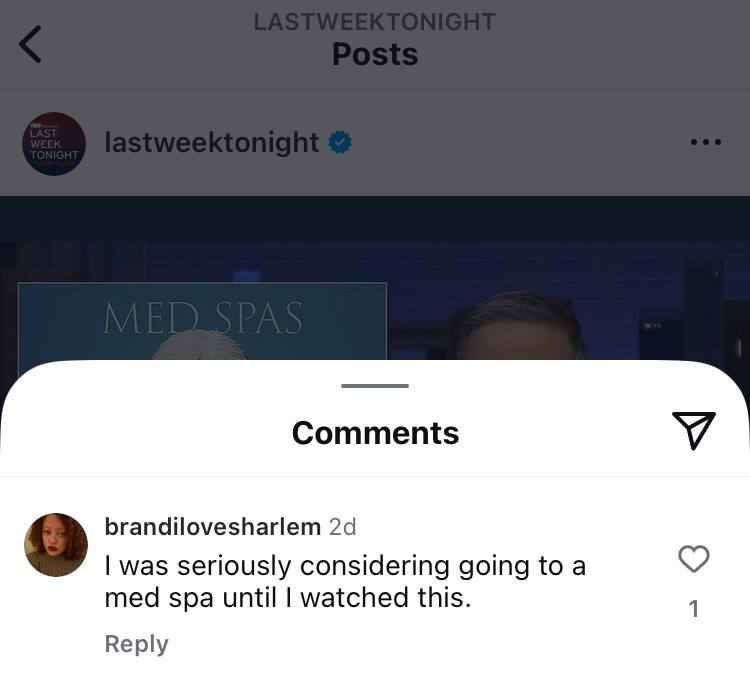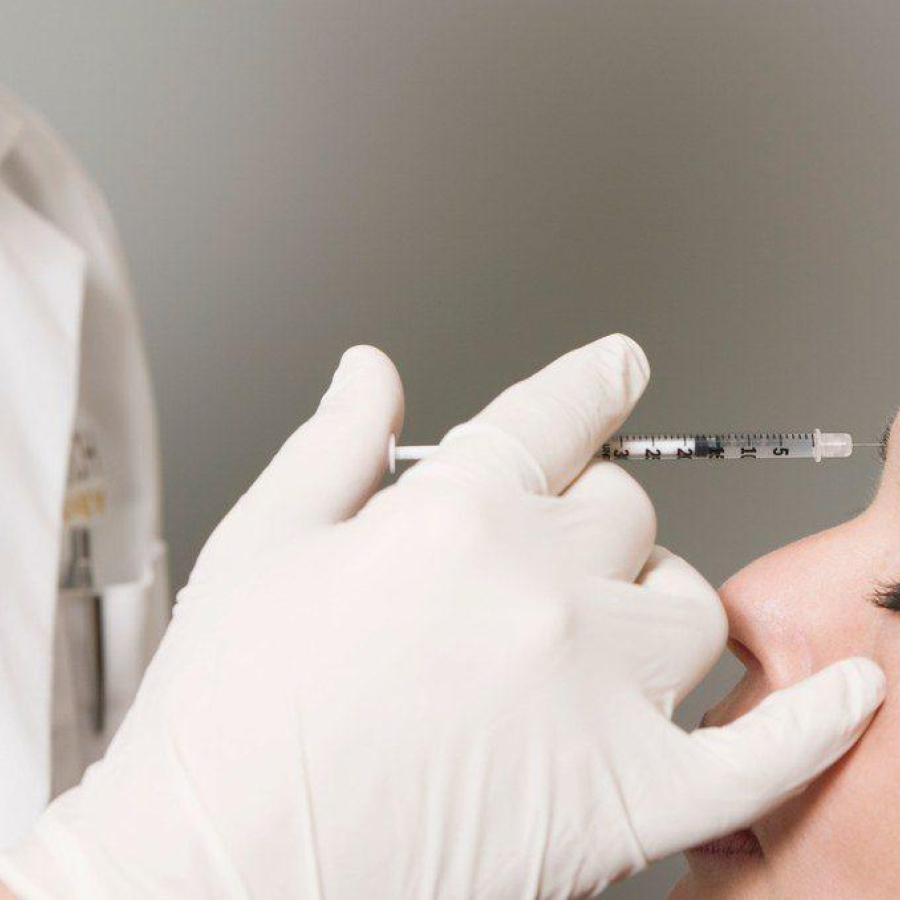
Legal
Second California Law That Affects MSOs Passes
California has now passed two laws that will have an effect on how investors, health care entities and management services ...
Posted By Madilyn Moeller, Thursday, June 12, 2025

By Eric Atienza, Assistant Director of Digital Marketing and Marketing Technology
For the thousands of safe, responsible clinicians in medical aesthetics, patient safety and legal compliance have always been cornerstones of their practice. However, as in any industry as fast-growing and lucrative as this one, bad actors looking to make a buck cut corners, mis-represent themselves and behave irresponsibly.
We’ve all seen the horror stories in the news of bad outcomes resulting from irresponsible (and sometimes illegal) practice of medicine, and some of you reading this may have treated patients who were the victim of this poor practice.
As these stories keep coming out due to the bad-faith actions from a segment of the practices in this space, and as the industry and the public spotlight on it keep growing, it’s never been more important to prioritize patient safety and legal compliance. Both for your own practice and the medical spa industry as a whole.
Over the last ten years there’s been no shortage of local news reporting on negative outcomes from med spas that may have looked safe and responsible on the outside, but beneath the surface were operating in a completely non-compliant manner. However, coverage from larger outlets like this feature about Rogue Med Spas on the Dr. Oz show in 2018 were relatively uncommon.
In recent years, and this year in particular, attention has been increasing, from a Bloomberg News multi-part series on the beauty industry earlier this year, to this past weekend when Last Week Tonight with John Oliver featured the medical spa industry as its main story.
The segment was a checklist of all of the worst practices we keep seeing year after year.
AmSpa has spent ten years providing education and online resources to try and help practices understand and navigate the sometimes complex legal requirements to operate compliantly and safely, from our state-by-state legal summaries to our Medical Spa Boot Camps. At the beginning of every Boot Camp we’ve ever done, AmSpa’s CEO and Founder Alex Thiersch, JD, gives a State of the Industry welcome talk in which he warns that, “the only thing that will stop the growth of this industry is ourselves.”
He talks about adverse events that make the news, and that these bad actors will not only undermine consumer confidence, but also will eventually result in overregulation from legislators that only see the very public negative outcomes. And the people that lose the most in both of those scenarios are always the practices that are doing the extra work to operate compliantly and safely.
Unfortunately, we are seeing that come to fruition now.
In John Oliver’s segment, he brings up Texas HB 3749, dubbed “Jenifer’s Law” after the tragic death of Jenifer Cleveland at an IV therapy clinic. In this case, a physician was delegating IV therapy treatments to an unlicensed person over 100 miles away. This ultimately resulted in a bill that would have essentially restricted APRNs and PAs so severely that they might not have been able to continue to work in medical spas if it would have passed in its original form, despite no APRNs or PAs being involved in the incident.
Fortunately, AmSpa and others in the industry found out about this bill early enough to intervene. Alex traveled personally to Austin and, along with Texas State Chapter Chair S. Alexis Gordon, MD, FACS, met with representatives to educate them on how safe med spas work in practice, and how the bill’s original language would actually put more patients at risk. The bill that was finally passed narrowed its scope to elective IV therapy facilities only, removing the language that would have impacted safe, responsible clinicians across the state.
This was a clear case of bad actors, combined with a general public lack of knowledge of the medical profession, creating an outcome that threatened an entire profession of clinicians who were following the rules and prioritizing patient safety.
And HB 3749 was only one of several bills that were put forward in the Texas House of Representatives affecting medical spas during this legislative session, though the rest did not make it out of committee.
Legislators aren’t the only ones affected when these negative news stories get out. Prospective patients see it as well, which can have outsized negative effects on patient confidence when all of the individual stories get presented together in a package on a platform as large as Last Week Tonight.
Writing about the segment, Thiersch said, “While it’s easy to be defensive, here’s the hard truth: This segment is what the public sees when they think of med spas. Not the thousands of responsible, highly trained medical professionals we know. Not the providers who follow the rules, who put safety first and who care deeply for their patients. They see the circus. And we’re the ones who suffer for it.”

One of the reasons that medical aesthetics is growing so fast is that there are so many people in the country who still have not had a single treatment, and who are not yet familiar with what’s possible with non-surgical aesthetic procedures. For many of them, their first encounter with med spas are these news stories featuring adverse outcomes from irresponsible providers, and this creates a damaging first impression.
At Medical Spa Show 2025, the first educational session brought together a panel of physicians, attorneys and professionals to discuss the challenges the industry has been facing as it grows.
The consistent mantra from everyone was that the practices that cared enough to invest in legal compliance tended to also be safe practices run by responsible clinicians who invested in the best outcomes for their patients – including team-based care from physicians, NPs, PAs and RNs. But legal compliance itself can be difficult to understand.
“I think the ones that are legally compliant are very safe. The problem is that there are so many illegal spas popping up,” said Katherine Dee, MD, and author of Medspa Mayhem. “There are now more med spas than Starbucks in this country. There are weekend courses where non-medical people get taught how to inject Botox.”
“Our firm exists to help med spas understand the laws in each state, as you know,” said Michael Byrd, JD, partner at health care law firm ByrdAdatto. “With lack of clarity, it’s not just for med spas to understand what they need to be compliant, it’s for the people that enforce. Multiple times people have reached out to Boards and they’ll point back to us to help tell what the laws are, because they don’t understand them themselves.”
“Compliance comes at a state level, and unfortunately most states don’t even know what the medical spa industry does,” said Nicole Gregory, CEO, Urban You, President, Michigan MedSpa Association (MISpa). As states lack knowledge and oftentimes enforcement, MISpa is attempting to foster patient safety by increasing transparency and creating a directory of trained, credible med spa medical directors in the state to allow patients to make more informed decisions about their care.
But while understanding compliance needs can be difficult and requires a lot of up-front work and attention, once a practice has procedures and standards in place, the day-to-day implementation of safety and compliance doesn’t have to be hard.
“I helped with two occlusions in the last two weeks, nationally, and they were honestly really easy to manage,” said Patrick Blake, MD, FAAD, founder and chief medical officer, Portrait. “Because the people know what they’re doing, I know they have the right amount of Hylenex on site, I know they understand their anatomy, I know they’re using good product, I know they’re going to do good follow-up, and I know they’re going to follow up with me. If you put the effort in and you are methodical in your process, I think it’s really easy to do it the right way.”
Brad Adatto, JD, partner at ByrdAdatto, spoke about how non-compliance comes with the twin dangers of repercussions for you and your license, but also overregulation spreading across the states.
“Unfortunately, there are other organizations out there who are training these individuals that it’s OK that anyone can own, or it’s OK that you don’t have to have the Good Faith Exam, and that’s where we get pulled into Medical Board investigations,” he said. “My sister’s a state rep and she’ll go to these meetings and they talk about, ‘That sounds like a good law, we should pass that in Louisiana now.’ That’s why it’s so important to get ahead of this, and that’s why it’s so important to be compliant right now.”
Opening up the Medical Spa Show 2025, before the panel, Thiersch laid out several of the challenges the industry is facing right now and outlined that the only viable path forward was together. Safe, legally compliant med spas along with industry support championing the ideals of safe practice, high standard of care and adherence to the law.
After running through a litany of news stories, studies, and proposed legislation undermining the current construction of medical spa supervision and delegation, Thiersch said, “Our obligation is not to attack the other side. It’s, ‘What are we going to do together, right now?’ This is the time. I have seen that when this industry is motivated we can do anything.”
In his reaction to the Last Week Tonight segment linked above, Thiersch laid out a number of areas that the med spa industry needs to address as a collective:
But as he states in his post, the only way any of this succeeds is if enough practices, practitioners, professionals and companies accept that this is the way forward and step in time shoulder to shoulder.
AmSpa will, as always, continue to educate, train and raise the alarm when we see an issue. We will continue to send out alerts regarding counterfeit Botox or parallel importation. We will continue to provide resources to create clarity around med spa laws in your state or how to run a safe IV therapy practice. We will continue to offer training – both in-person and virtual – on how to run a successful practice that puts patient safety and legal compliance first.
But as these new challenges emerge, our roadmap includes new planned initiatives including:
In the meantime, as there are still no consistent national regulations for this industry, as there is still no consistent enforcement of existing laws, and as there are a growing number of news stories surrounding these negative outcomes, it’s more important than ever to make sure you are doing things the right way.
Have your processes buttoned up, have your corporate structure iron clad, continually undergo clinical trainings from safe, reputable trainers, and be absolutely transparent about all of it. Now is not the time to be humble about the effort and hours you spend to maintain your high standards. Show the world what safety and responsibility mean. Be the example to the practices around you, and make it clear to every patient and would-be patient who might encounter you that you put their safety first.
We can change the narrative around medical aesthetics, we can strengthen public trust in this industry we’ve built, and we can make sure the future is bright for all of the talented clinicians practicing responsible medicine in this space.
But we can only do it together.
Related Tags
Medical spa news, blogs and updates sent directly to your inbox.

Legal
California has now passed two laws that will have an effect on how investors, health care entities and management services ...

Legal
A newly passed law in California will prohibit certain contractual provisions between medical and dental practices and private equity groups ...

Legal
By Patrick O'Brien, General Counsel, American Med Spa Association (AmSpa)The September bulletin from the Texas Medical Board (TMB) helps to ...

Legal
By Patrick O’Brien, General Counsel, American Med Spa AssociationOn September 23, 2025, the Alabama Board of Medical Examiners (BME) issued ...